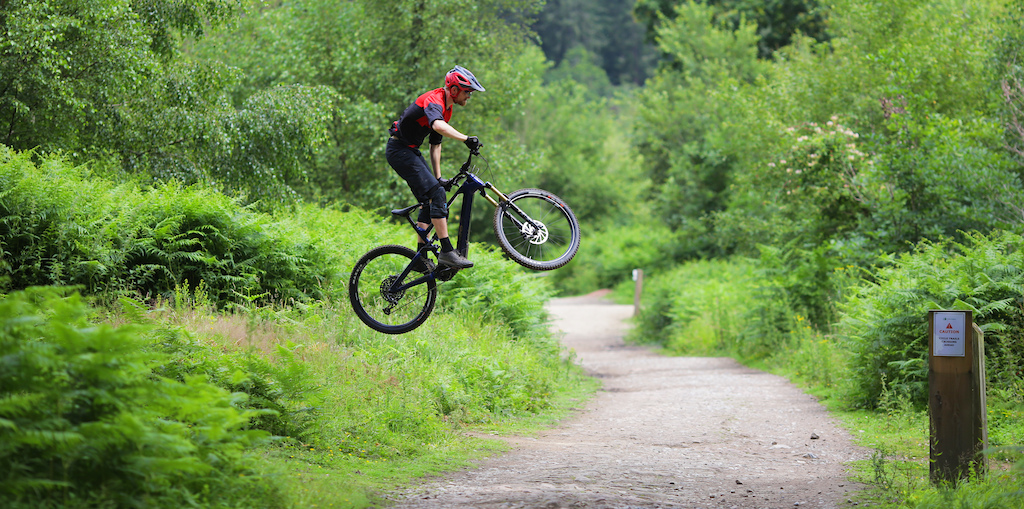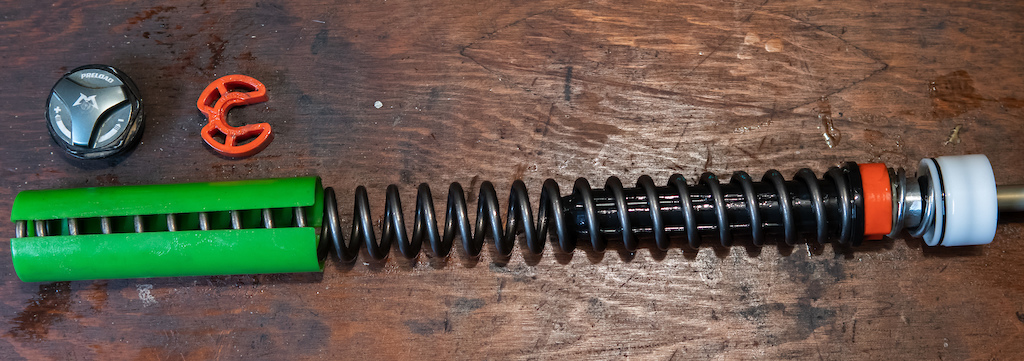Ask Pinkbike: eMTB Sag, Stem Length vs. Reach, Fork Noises, & Saddle Comfort
Here at Pinkbike, we get inundated with all kinds of questions, ranging from the basic "Can I have stickers?" to more in-depth, soul-searching types of queries like if you should pop the question or what to name your first child. Ask Pinkbike is an occasional column where we'll be hand-picking and answering questions that have been keeping readers up at night, although we'll likely steer clear of those last two and keep it more tech-oriented.
Do eMTBs require firmer suspension?
Question: @JudyYellow asks: "A co-worker and I were discussing eBikes, suspension spring rates, and how that affects the sag rate and an interesting question came up. Should you over spring an e-bike to accommodate for the extra weight of the bike?
Normally to achieve the correct sag rate you would shoot for approx 30% of shock stroke. Sag is mostly determined by rider weight and to set sag you jump on the bike cycle the suspension to charge the spring, add/remove air to achieve ~30% of stroke (on a shock). Go ride....
Bike weight is not usually factored into the sag rate. However... when riding an e-bike you have approx 10lbs or more of extra bike weight which should affect the suspension when landing jumps, drops etc since the shock spring has to soak up the system weight (bike + rider). Is it only the rider's weight affecting the shock spring when landing drops, etc? This is the missing piece I don't have...If total system weight (bike + rider) affects the shock should I go for a 25% sag rate instead? 20%? Same applies for coil springs as well.... Do you go 50lbs up on your coil shock spring if using an e-bike?
eMTBs can undergo some large forces, but setting up the suspension is still all about front to rear balance and tuning the bottom out control.
Can you use a longer stem to increase reach?
Question: @fire-munki asks: "Not sure if this is bike fit or bike modifications! Currently I’m on a 2016 Cube Stereo 140 (18") which is a fun enough bike but over the years I’ve found myself getting less enamoured with playing in the woods doing the same run each time (mainly since I’m to scared to ever really jump/hit drops) so have started heading out further on things closer to XC jaunts.
In an effort to make the bike a bit more suitable I’ve got a newer Fox Float with working lockout, got the stem right on the admittedly tall top cap and lower than stock rise bars. Now looking to make it feel less cramped so looking for longer stems (stock 45mm 0 degree), the great ebay has a few options at 50mm and 60mn 0-degree options. What I’m worried about is wrecking the handling with such changes, my saddle is pushed fairly forward to work on keeping the front down when climbing.
Any opinions either way? The 50mm is pretty much like stock so can’t see it changing it much but the 60mm might be too much? Or just what I need!"
Charles Murray broke onto the EWS scene last year with a sixth place. At 183cm tall, his size medium frame and 65mm stem was an uncharacteristic choice, but didn't slow him down.
Trouble with a new fork spring install
Question: @dirtflipper asks: "I installed a new Marzocchi Bomber Z1 Coil. Before installation, I changed the stroke length from 170mm to 150mm. Everything works great with the shock except two things. One, the shock makes a creaking noise as it moves through its stroke. Two, when the shock compresses/extends ever so slightly it seems like there is a couple mm of play in it. So, if you go over a bunch of very small rocks, the shock does this weird chattering thing as it moves quickly in what seems to be an undamped few mm of stroke. Are either of these normal for a coil? I have never had one before, so I do not know."
Coil springs are a popular choice for their small bump sensitivity and linear nature, but they can rattle inside the stanchion if they are not preloaded enough. Over-preloading them can causing the spring to bind and bend out of shape as well.
Getting comfortable in the saddle
Question: @witterisms asks: "I got a new bike at the end of last year (YT Capra), and now the evenings are much longer, I've been able to spend more time on the bike/in the saddle - but increasingly hitting the 2-3 hour ride mark it start to get sore when I am in the saddle, and then sore the day after. As far as I can tell I have the saddle in the best position possible, and the body position is comfortable when riding.
What's best to invest in? Better padded shorts (quick look on CRC shows £30+ for seemingly good shorts) or new saddle - I have seen a lot of Enduro riders on Fabric saddles, they seem to start at £45, but obviously more on the market.
From what I know, its hard to test either. All help appreciated. "
Saddle style, width, height, and angle are all factors in finding the most comfortable position. There are a lot of factors in play here.
Author Info:
Must Read This Week
[UPDATED] Final Elite XC Results & Overall Standings from the Mairiporã XC World Cup 2024
42315 views
42315 views
Sign Up for the Pinkbike Newsletter - All the Biggest, Most Interesting Stories in your Inbox
PB Newsletter Signup






Just as an example: you have a spring with a springrate of 5 N/mm. Now you preload it with 50 N, so it already sits 10 mm in its travel. Now the force to actually deform the spring (elastic torsional deformation) any further has to exceed those 50 N. Otherwise it's more like a rigid fork at this point.
A spring with 2" of travel and a 400lb rating requires 400lbs to compress those 2", always. But, where you are in that 2" of travel determines how much weight is being supported by the spring. So, on this 2" stroke 400lb spring, 20lbs will compress the spring 1/10th of an inch, 40lbs will compress it 1/5th of an inch, 60lbs will compress it 3/10th, etc. So, when you dial in the preload ring 1/10th of an inch, you're literally "pre-loading" the spring with the equivalent of 20lbs of force to create a support platform to set your sag for positive/negative suspension travel... but that's completely independent of spring rate and every 1/10th of inch of travel still requires an additional 20lbs.
It was broadly similar for me too. On Ergon's saddle width chart I'm right on the borderline between S/M and M/L, and using saddles that wound up being around the size for the S/M saddles wasn't super comfortable for me after a few hours riding, whereas the M/L sizes were primo. Beyond that it was finding the smallest width I could get away with (purely for clearance reasons). It turns out for me that was the SDG Belair 3.0, but that was only after I'd tried a few others. It's definitely worth experimenting with, but mainly once you've got a rough idea of what width to aim for.
I had this happen to my Knolly.
I tried everything and it wouldn't move.
Luckily it had a Di2 port near the BB. I was able tap (smack) it out with a piece of copper pipe.
Obviously this destroyed the dropper post but I saved the frame.
Pull the bb, try to pour some Coke down the seat tube, let it sit like that for a couple days. You should see some weeping on the seatpost to let you know it’s worked it’s magic.
Used this truck lots on seized spark plugs in aluminium heads.
And really, if you're out buying ATF, you might as well pick up straight acetone for the mix.
Us 225lbs people who have been riding normal bikes forever: Yeah ok...
15&30 f&r when seated
If you want to charge the front wheel and have front tire grip, 30% is way too much.
Try reducing sag to 20% and reducing LSC. If you have tokens try removing some.
Steering hasn't been buggered up to much either which is good.
Oh and you consider telling Pinkbike to f*ck off as a “contribution to a discussion”? You’re laughably hypocritical.